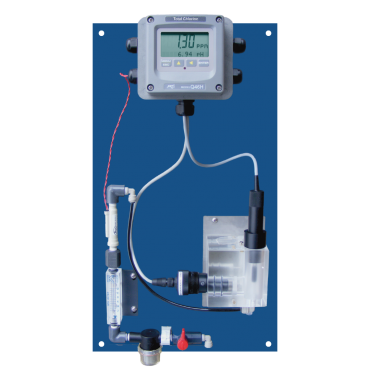Chlorine Analyzer
Chlorine analyzer is an equipment used to measure the amount of chlorine in a solution. Chlorine is a type of chemical element known for its disinfectant properties. It is often used to disinfect surfaces, swimming pools and even the water we drink. However, in large quantities, chlorine can also be poisonous and irritating to humans. Thus, the need to ensure that the chlorine content in various water sources is at desired levels is crucial. Our chlorine analyzer is industry graded to ensure accurate parameters and readings.
Chlorine analyzers are utilised in a wide range of water treatment, sewage treatment and industrial applications where free and total residual chlorine levels need to be measured and controlled. The Chlorine Analyzer has a number of important advantages, such as minimal ownership costs, less reliance on pH equipment, and stable and consistent readings.
Our Chlorine Analyzers or analysers are based on the technology of Membrane-Covered Amperometric (Polarographic) sensors where you can say goodbye to buffers and DPD Reagents forever.
FAQs About Our Chlorine Analyzer
What is a chlorine analyzer?
A chlorine analyzer is an equipment used to measure the amount or concentration of chlorine in a given solution. It is often used in water treatment plants, public pools and pharmaceutical laboratories.
What are the two types of online chlorine analyzers?
The two types of on-line chlorine analyzers are reagent and non-reagent. Reagent aims to analyse the total chlorine content in a solution while non-reagent is limited to free available chlorine measurement.
What is chlorine metre used for?
Chlorine metre or chlorine analyzer is used for measuring the chlorine content in a given solution.
How do you calibrate a chlorine analyzer?
It depends on your chlorine analyzer. Some chlorine analyzers are sold calibrated while some you will need to manually calibrate. In case of the latter, it is best to ask your supplier for assistance.
 Call Us
Call Us 





